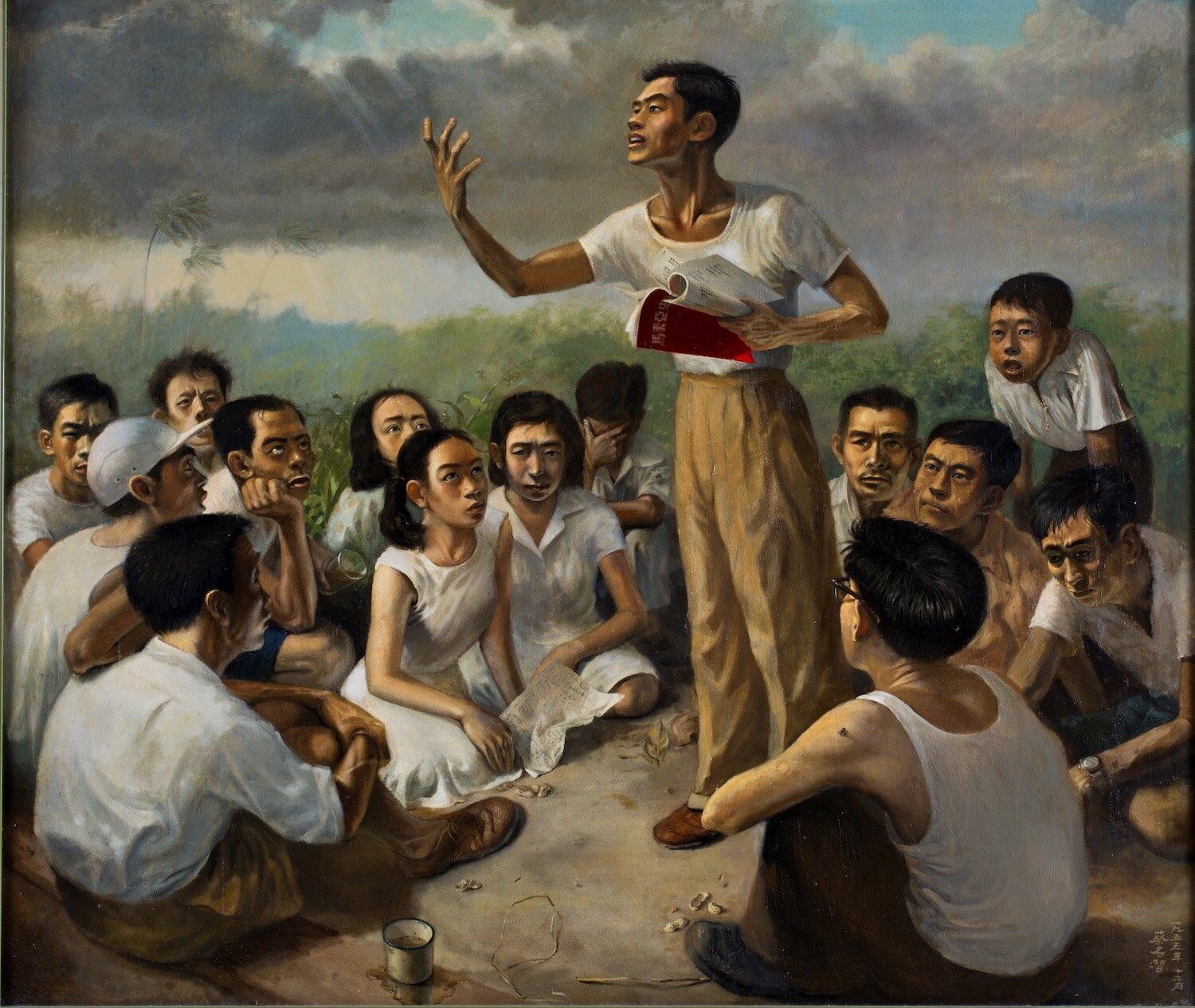Seeing the Forest For the Trees
Ang Song Nian, Woong Soak Teng, Fitri Ya’akob
By Vivyan Yeo
Ang Song Nian, ‘As They Grow Older and Wiser #3’, 2016, dye-sublimination on polyester, 250 x 200 cm, edition 1 of 3. Image courtesy of the artist.
To say that someone cannot “see the forest for the trees” means the person is failing to recognise the bigger picture. It is an accusation of being too caught up in minutiae and lacking a broader perspective. Flipping the expression around, this exhibition focuses on how we might sometimes choose to overlook the small but poignant details in our everyday environment. ‘Seeing the Forest For the Trees’ features Singapore artists Ang Song Nian (b. 1983), Woong Soak Teng (b. 1994) and Fitri Ya’akob (b. 1996), whose photographic works challenge our initial big picture impressions and encourage us to look more closely.
Throughout the exhibition, nature is presented in various contexts of control and disregard. Although the human figure is visually absent, humanity, in fact, holds an inordinate amount of control over the existence of nature. Whether it is through the manipulation of plants to grow a certain way or the introduction of manmade materials into natural habitats, nature is treated as something to tame, use and own.
Exhibition view of ‘Seeing the Forest For the Trees’ at Art Agenda @ 63 Spottiswoode. Image courtesy of Art Agenda, S.E.A..
The notion of control is further explored in our curatorial intervention in the middle of the gallery space. Held within 20 neat rows of bricks is a field of ferns, one of the world’s oldest groups of plants that can survive in almost any wild environment. Today, ferns are “domesticated” and commonly seen indoors in shops and hotel lobbies where a touch of nature is welcome. Instead of going to the great outdoors, many of us choose to bring nature home for domestication. On an accompanying wall, the premise that we need to dominate the environment is challenged by the question, “Would there be chaos without control?”. The artists have penned their thoughts and visitors are also invited to respond by writing directly on the wall. On a more personal level, we also ask, “Do you live more by order or chaos?” encouraging visitors to think about the importance of control in their lives.
Echoing humanity’s need to claim the environment, the work of Song Nian sheds light on our complex relationship with nature. Titled ‘As They Grow Older and Wiser’ (2016), the series depicts an apparently verdant forestscape. Upon closer look, however, we notice that these trees are actually potted plants and that many of them are being supported by manmade poles. Song Nian has dealt us a visual sleight of hand. These trees were photographed at a plant nursery in Bangkok, waiting to be bought and placed by clients. “Our never-ending and voracious appetite for this need for control has resulted in this little pot of nature, which we have wilfully claimed ours,” reflects Song Nian. “We have made nature a little smaller, and churned out many more species, types and families of different shapes, colours and sizes.”
Woong Soak Teng, ‘In front of Jurong West Street 81, Block 844’, 2015-2018, digital inkjet print on Aquarelle Rag paper, 57 x 38cm, edition 1 of 2 + 1AP. Image courtesy of the artist.
Soak presents ‘Ways to Tie Trees’ (2015-2018), a series that captures different methods to tree-tying by urban landscapers in Singapore. The tree trunks are shot up close with their backgrounds omitted, jolting us to come face to face with how a tree can be “handled” by humans. “Similar to many cities around the world, trees are uprooted and relocated to conform to a controlled cityscape determined by urban planning,” explains Soak. “To construct a productive and aesthetic living environment for ourselves, nature has long since been subjected to manipulation at the mercy of our hands.”
Fitri Ya’akob, ‘Flowers of the Ocean’, 2018. archival C-print on lustre photo paper, 56 x 70cm, edition 1 of 3. Image courtesy of the artist.
Fitri similarly tackles our one-sided relationship with the earth through her series ‘Orang Laut’ (2018), which depict different facets of the coast in the Riau Islands, such as corals, seagrass and the shore. Despite their surface beauty, these areas are suffering the aftereffects of human action. We observe bits of plastic, rubber and fishing nets strewn across the seascape, quietly laying claim to the area. Here we ponder upon a conversation Fitri had with her grandmother:
Grandma, did you know that whales have died from eating plastic?
Nenek, nenek tahu ade ikan paus mati pasal makan plastik?
Don't worry, there are no whales near here.
Jangan risau la, tak ade ikan paus dekat sini.
All in all, ‘Seeing the Forest For the Trees’ reveals the obvious but oft-overlooked aspects of the environs around us. It seeks not to provide solutions but to lay bare humanity’s role in the state of our climate. Indeed, our view of the world depends much on what we choose to see.
‘Seeing the Forest For the Trees’ runs at Art Agenda @ 63 Spottiswoode Park from 2 October to 3 November 2021. Book your visit here.















